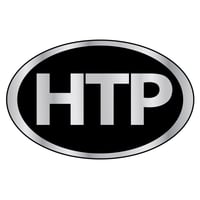Top 10 Installation Mistakes with Modern Gas Condensing Equipment
Are you familiar with the top 10 installation mistakes that occur with modern gas condensing equipment? Read our list below to see what you should avoid!
1. Vent Run Exceeds the Limit - Many vent runs exceed the limitation of elbows because the installer did not account for bend reductions, termination kits, and developed pipe length. Maximum vent runs for individual units are listed in the manufacturer’s manual and vary between product brands and models. See the installation and operation manual for more details.
2. Improper Combustion Air – Most products can be power or direct vented with 2”, 3”, or 4” Schedule 40 PVC, CPVC, and PolyPro. These products use large volumes of make-up air. Make sure you do the math to ensure the room, or vent depending on the application can handle the required make up air for the total BTU appliance load in that room.
3. Gas Line Undersized - Check the gas meter rating plate to ensure the gas line can support the combined BTU rating of all the gas appliances in the building. Consult the Natural or Propane Gas Supply Piping chart and plumbing diagrams in the manual to size the gas piping system correctly. Minimum pipe sizes designated by the manufacturer do apply. Confirm the BTU load and check the BTU rating on flex gas connector packages.
4. Gas Shut Off Valve Not Full Port - A full port manual gas control shut off valve should be connected to the gas line before connecting to the unit. Some conventional port gas valves can restrict gas flow enough to effect proper combustion.
5. Did Not Bleed the Air Out of the Tank Before Powering On - Before starting up the unit, the installer must purge all of the air completely out of the system. Then turn off the water and power the unit on.
6. Not Enough Pitch on the Exhaust Run - To avoid accumulation of condensate water in the exhaust run, position the horizontal venting upwards no less than 1/4" per foot from the appliance to the termination. Condensate (water) must run back to the appliance without obstruction. Proper support is crucial when hanging materials.
7. Improper Combustion. – Installation locations, altitudes, gas pressures, and applications vary. Once installed and running, proper combustion must be verified. Just like an automobile gets an inspection regularly, so should your condensing boiler or water heater. A unit operating with incomplete combustion may work fine today, but will be costly long term. An installer with working knowledge of a combustion analyzer should perform this test.
8. Recirculation System Lacks Proper Control - Control the DHW recirculation system pump with a timer and / or an aqua stat. Insulate the piping. Recirculation pumps that are just hard wired and run 24/7 waste fuel, reduce efficiency, and cause excessive wear on the system. Consult your manual for instructions.
9. Incorrect Condensate Drain Pipe Material - Use PVC, CPVC, or vinyl for the drain line. Do not use metallic materials. Condensate is acidic and ranges from 4.0 to 6.5 ph and must drain with PVC or CPVC and/or be neutralized first.
10. The Manufacturers Manual – One comes in every box for a reason. More often than not the installer never read, reviewed, or looked at it. It has the answers to 99.5 % of all questions called into tech support lines.
Consult the product manual for installation diagrams and instructions. Improper installations will usually void the warranty.
HTP's Manufacturing Engineers

